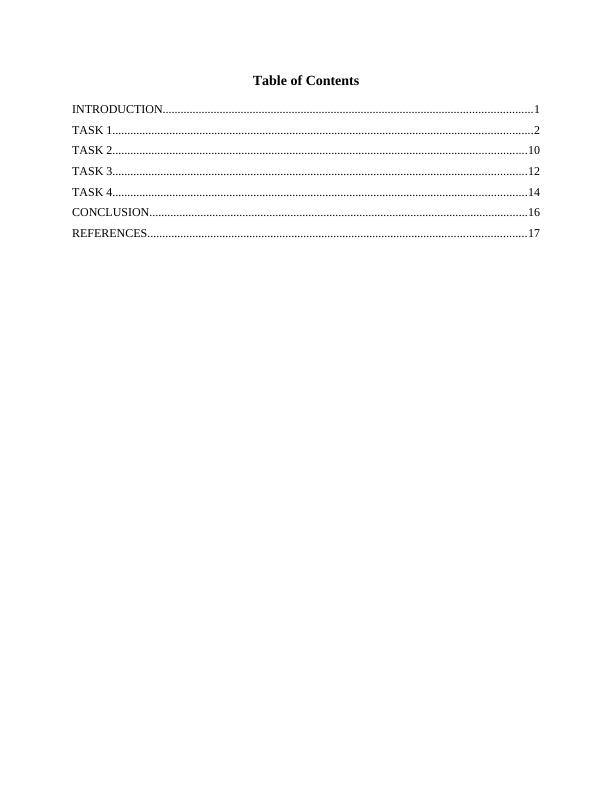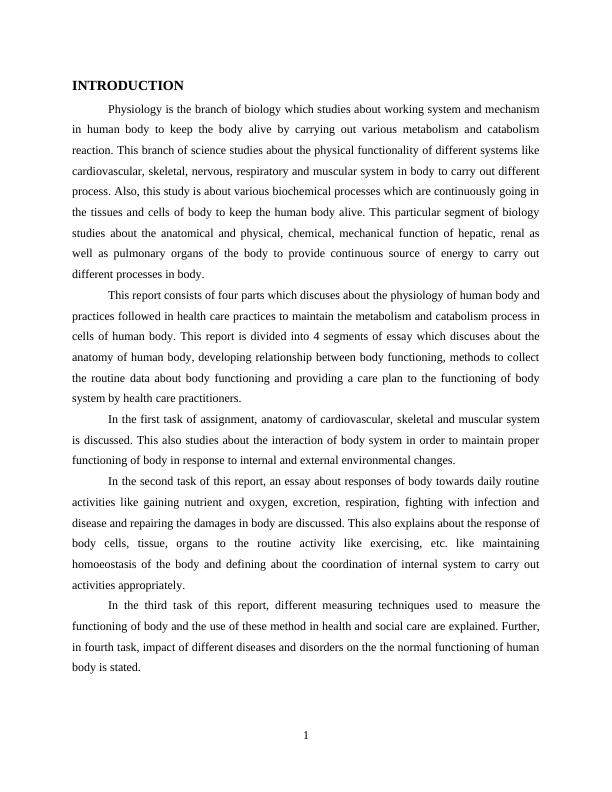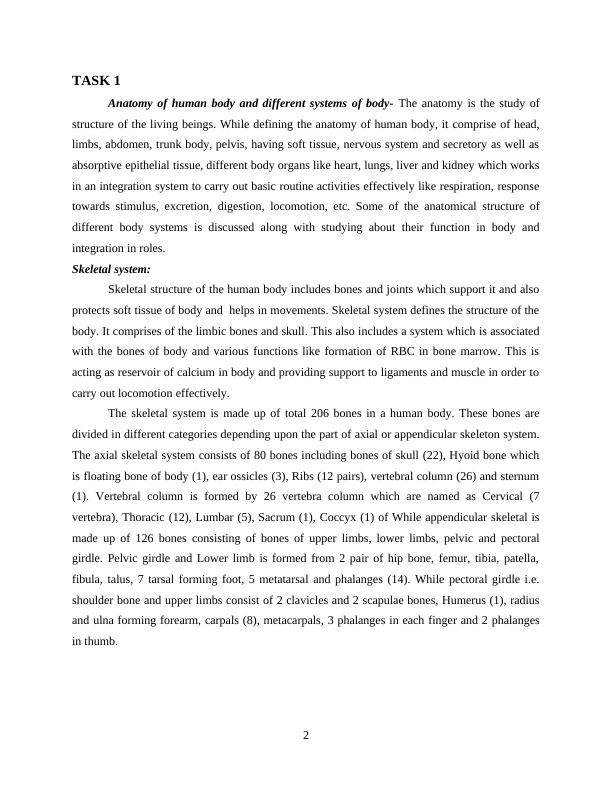Ask a question from expert
Physiological Principles for Health and Social Care : Report
20 Pages7196 Words163 Views
Added on 2020-07-22
Physiological Principles for Health and Social Care : Report
Added on 2020-07-22
BookmarkShareRelated Documents
Physiological Principles forHealth and Social Care

Table of ContentsINTRODUCTION...........................................................................................................................1TASK 1............................................................................................................................................2TASK 2..........................................................................................................................................10TASK 3..........................................................................................................................................12TASK 4..........................................................................................................................................14CONCLUSION..............................................................................................................................16REFERENCES..............................................................................................................................17

INTRODUCTIONPhysiology is the branch of biology which studies about working system and mechanismin human body to keep the body alive by carrying out various metabolism and catabolismreaction. This branch of science studies about the physical functionality of different systems likecardiovascular, skeletal, nervous, respiratory and muscular system in body to carry out differentprocess. Also, this study is about various biochemical processes which are continuously going inthe tissues and cells of body to keep the human body alive. This particular segment of biologystudies about the anatomical and physical, chemical, mechanical function of hepatic, renal aswell as pulmonary organs of the body to provide continuous source of energy to carry outdifferent processes in body.This report consists of four parts which discuses about the physiology of human body andpractices followed in health care practices to maintain the metabolism and catabolism process incells of human body. This report is divided into 4 segments of essay which discuses about theanatomy of human body, developing relationship between body functioning, methods to collectthe routine data about body functioning and providing a care plan to the functioning of bodysystem by health care practitioners.In the first task of assignment, anatomy of cardiovascular, skeletal and muscular systemis discussed. This also studies about the interaction of body system in order to maintain properfunctioning of body in response to internal and external environmental changes.In the second task of this report, an essay about responses of body towards daily routineactivities like gaining nutrient and oxygen, excretion, respiration, fighting with infection anddisease and repairing the damages in body are discussed. This also explains about the response ofbody cells, tissue, organs to the routine activity like exercising, etc. like maintaininghomoeostasis of the body and defining about the coordination of internal system to carry outactivities appropriately.In the third task of this report, different measuring techniques used to measure thefunctioning of body and the use of these method in health and social care are explained. Further,in fourth task, impact of different diseases and disorders on the the normal functioning of humanbody is stated.1

TASK 1Anatomy of human body and different systems of body- The anatomy is the study ofstructure of the living beings. While defining the anatomy of human body, it comprise of head,limbs, abdomen, trunk body, pelvis, having soft tissue, nervous system and secretory as well asabsorptive epithelial tissue, different body organs like heart, lungs, liver and kidney which worksin an integration system to carry out basic routine activities effectively like respiration, responsetowards stimulus, excretion, digestion, locomotion, etc. Some of the anatomical structure ofdifferent body systems is discussed along with studying about their function in body andintegration in roles.Skeletal system:Skeletal structure of the human body includes bones and joints which support it and alsoprotects soft tissue of body and helps in movements. Skeletal system defines the structure of thebody. It comprises of the limbic bones and skull. This also includes a system which is associatedwith the bones of body and various functions like formation of RBC in bone marrow. This isacting as reservoir of calcium in body and providing support to ligaments and muscle in order tocarry out locomotion effectively. The skeletal system is made up of total 206 bones in a human body. These bones aredivided in different categories depending upon the part of axial or appendicular skeleton system.The axial skeletal system consists of 80 bones including bones of skull (22), Hyoid bone whichis floating bone of body (1), ear ossicles (3), Ribs (12 pairs), vertebral column (26) and sternum(1). Vertebral column is formed by 26 vertebra column which are named as Cervical (7vertebra), Thoracic (12), Lumbar (5), Sacrum (1), Coccyx (1) of While appendicular skeletal ismade up of 126 bones consisting of bones of upper limbs, lower limbs, pelvic and pectoralgirdle. Pelvic girdle and Lower limb is formed from 2 pair of hip bone, femur, tibia, patella,fibula, talus, 7 tarsal forming foot, 5 metatarsal and phalanges (14). While pectoral girdle i.e.shoulder bone and upper limbs consist of 2 clavicles and 2 scapulae bones, Humerus (1), radiusand ulna forming forearm, carpals (8), metacarpals, 3 phalanges in each finger and 2 phalangesin thumb.2

End of preview
Want to access all the pages? Upload your documents or become a member.
Related Documents
Physiological Principles for Health and Social Care Doclg...
|20
|6332
|342
Physiological Principles for Health and Social Carelg...
|21
|6945
|479
Physiological Principles for Social Care : Reportlg...
|12
|3993
|213
Physiological Principles in Health and Social Care - Project Reportlg...
|16
|4303
|89
Physiological Principles for Health and Social Carelg...
|18
|5587
|308
Physiological Principles of Health and Social Carelg...
|14
|4291
|361